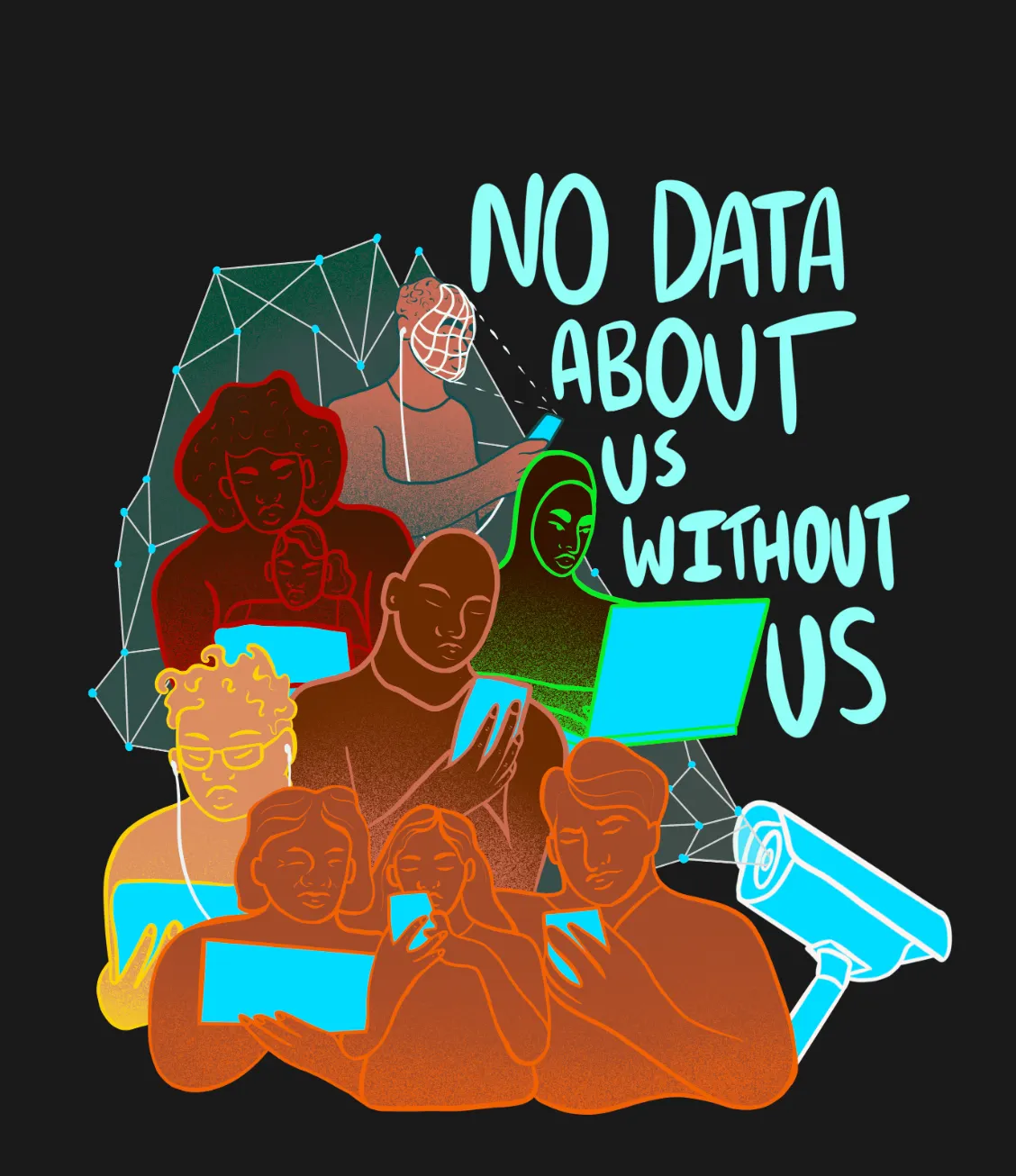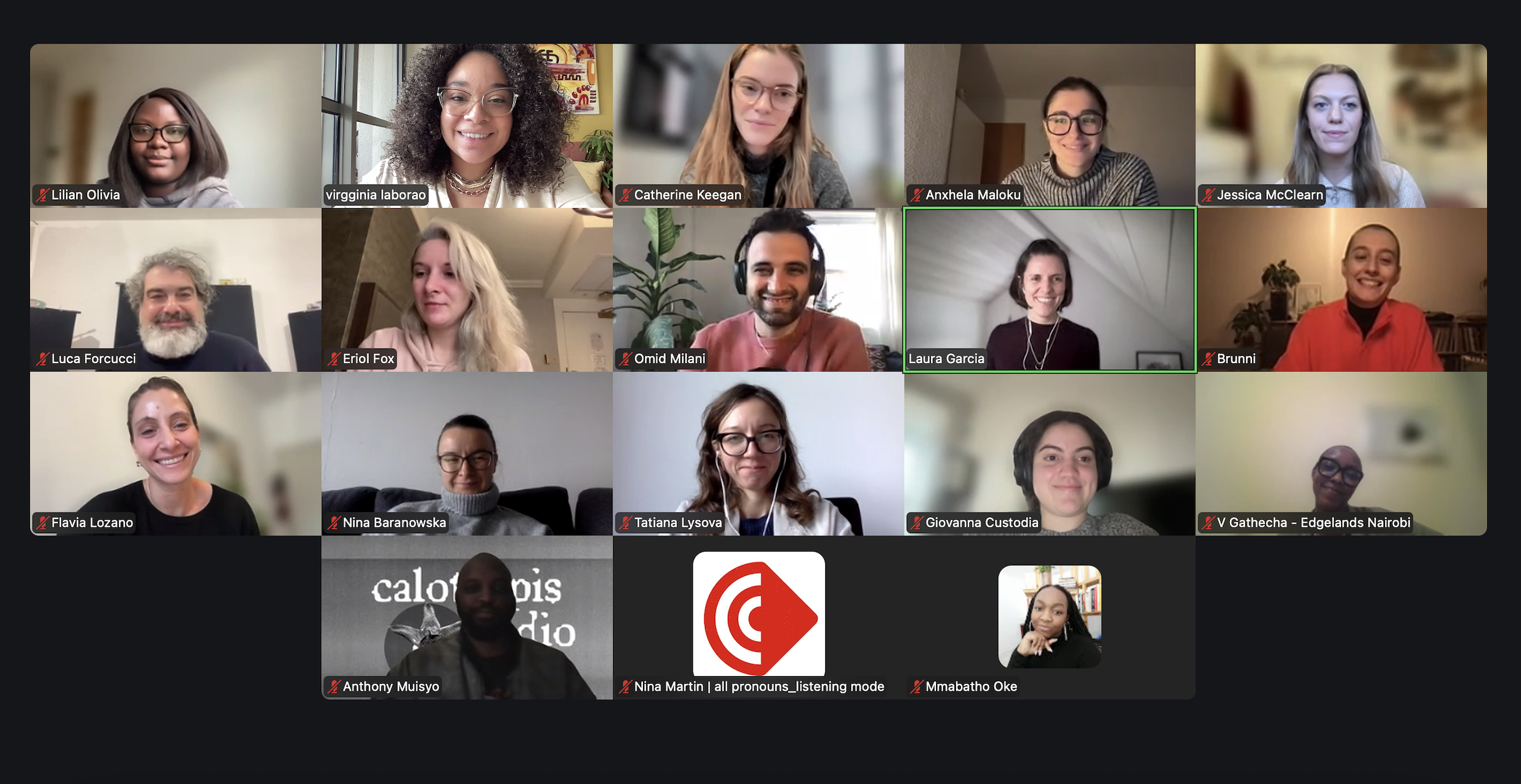Cadres de négociation des intérêts divergents
Ce billet de blog passe en revue quatre théories et cadres qui offrent des lignes directrices pour équilibrer des intérêts tels que la gouvernance efficace, la justice, l'équité, les libertés individuelles et la sécurité publique.
.jpg)
« Ma vie à travers un objectif » sur Unsplash
L'ère numérique a apporté de nombreux changements dans tous les aspects de la vie quotidienne. À mesure que les gouvernements fédéraux, étatiques et locaux ont mis en œuvre des technologies pour faciliter leurs fonctions, ils se sont confrontés à de nouveaux défis en matière d'équilibre des priorités, parmi lesquelles figurent les notions de gouvernance efficace, de justice, d'équité, de libertés individuelles et de sécurité publique, pour n'en citer que quelques unes. Cette conciliation des intérêts est un processus de négociation permanent qui offre aux parties prenantes la possibilité de remédier aux inégalités sociales.
Ce billet passe en revue quatre théories et cadres qui offrent quelques lignes directrices sur la manière de mener ces négociations. L'une des approches consiste à effectuer une analyse coûts-avantages traditionnelle. Une autre permet de comprendre que ces négociations se déroulent au sein d'un système. Une autre approche déconstruit les systèmes de pouvoir imbriqués et socialement construits pour concevoir des solutions centrées sur les communautés historiquement marginalisées. Enfin, la quatrième approche explore la pratique d'une éthique de l'amour.
Analyse coûts-avantages
L'analyse coûts-avantages est un processus que les entreprises et les responsables politiques utilisent souvent pour analyser les décisions à prendre et celles à abandonner. Issue de la micro-économie classique, cette technique revient à additionner les potentiels apports attendus d'une situation ou d'une action, puis à soustraire les coûts totaux associés à cette action. Si cette opération donne un résultat positif, elle est généralement considérée comme efficace et est donc mise en place ; un résultat négatif incite le décideur à abandonner l'opération en question.
L'analyse coûts-avantages est largement utilisée et constitue aujourd'hui un mécanisme important de gouvernance et de gestion. Cependant, bien que simple à première vue, ce processus en apparence direct laisse de nombreuses questions sans réponse, notamment celle de savoir à qui sont attribués les coûts et les avantages et comment sont-ils quantifiés . Elle tend également à privilégier le changement progressif au détriment du changement systémique ou de formes plus imaginatives de changement. Je propose ci-dessous quelques alternatives qui peuvent compléter l'analyse coûts-avantages pour comprendre et évaluer les processus de négociation en jeu dans la réflexion sur le changement politique et social.
Théorie des systèmes
La théorie des systèmes postule que les interactions entre des systèmes plus petits créent des systèmes complexes et plus vastes qui peuvent être compris dans toutes les disciplines. En tant qu'outil analytique, cette théorie permet aux praticiens du changement social d'examiner de manière holistique les conditions et les facteurs environnementaux, et ainsi de mieux comprendre pourquoi une organisation rencontre des difficultés ou ne fonctionne pas de manière effective vis-à-vis de l'ensemble de ses membres.
Le postulat sous-jacent de la théorie des systèmes est que le tout est supérieur à la somme de ses parties. Par conséquent, les systèmes plus petits sont censés impacter et être impactés par le plus vaste et le plus complexe système qu'ils forment. On pense en effet qu'un système complexe se dirige vers l'homéostasie, c'est-à-dire vers un état stable. Chaque fois qu'un nouveau facteur affecte le système, celui-ci est censé s'adapter pour se préserver et présente ainsi une forte capacité de renforcement et d'équilibrage. Toute caractéristique, tout comportement se développant dans le système complexe doit être le résultat de l'imbrication des relations entre les petits systèmes et non le fait d'un système agissant seul. Par conséquent, il est difficile de changer un tel système.
La théorie des systèmes est utile comme outil pour décrire les différentes circonstances qui peuvent façonner un problème particulier, mais elle n’est pas toujours utile pour identifier des solutions ciblées.
Comment la pensée systémique peut-elle être appliquée au changement social ?
Le consultant en systèmes David Peter Stroh souligne l'importance d'aligner les intérêts immédiats des parties prenantes sur leurs aspirations les plus élevées lors de l'application des outils de pensée systémique à la résolution des problèmes sociaux. Cela garantit que les résultats de systèmes complexes correspondent aux objectifs réels des différentes parties prenantes. Par exemple, l'intérêt immédiat peut être le résultat d'une politique particulière, et les aspirations les plus élevées peuvent être la vision vers laquelle cette politique tend. Stroh estime qu'il est possible pour les parties prenantes de concilier leurs intérêts individuels et ceux liés à leur vision. Stroh présente un processus en quatre étapes pour créer cet alignement nécessaire : 1) comprendre les avantages du système existant, 2) comparer les avantages et ce qui serait nécessaire pour provoquer le changement, 3) faire un compromis entre les intérêts à long terme et à court terme, et 4) faire une priorisation intentionnelle des intérêts nécessaires au changement.
Comme l'analyse coûts-avantages, l'approche des compromis semble simple à première vue ; il paraît facile pour les parties prenantes de choisir le changement plutôt que le maintien du statu quo. Cependant, des interrogations persistent : Quels sont les intérêts représentés ? À quel prix le changement est-il priorisé ? Que faire lorsque les intérêts ne sont pas alignés ? Et à quoi ressemble exactement le "changement" ? Ainsi l'approche des compromis est-elle complexe -et d'autant plus lorsque les décisions impactent directement les individus.
Deborah Frieze, praticienne et chercheuse en pensée systémique, estime, quant à elle, qu'il est quasiment impossible de changer les grands systèmes qui défaillaient les communautés ; on ne peut que les abandonner et repartir à zéro ou offrir des soins palliatifs à ceux qui agonisent. Pour elle, il est toutefois important que les acteurs assument des rôles différents, créant le nouveau système tout en soutenant l'ancien à son déclin, car personne ne bénéficie d'un système qui s'effondre subitement.
La théorie des systèmes n'explique pas toujours les causes d'un problème particulier. Son application dans divers domaines a montré que, parfois, d'autres analyses traditionnelles au sein d'un domaine sont mieux adaptées pour expliquer un problème particulier. Par exemple, en psychologie, la théorie des systèmes peut être appliquée pour comprendre les différentes circonstances affectant le développement ou la santé mentale d'un individu (par exemple, la société, l'éducation culturelle, les politiques). Cependant, elle n'est pas la meilleure approche pour traiter les troubles mentaux graves pouvant nécessiter un traitement médicamenteux ou des soins particuliers.
En marge : Une approche de justice conceptuelle
Français Les raisons derrière la justice du design peuvent être comprises à travers la discussion de Costanza-Chock sur les systèmes d'IA . Costanza-Chock cite longuement et encourage la mise en œuvre des principes du Design Justice Network , qu'elle décrit comme ayant été initialement développés par un groupe de 30 designers, artistes, technologues et organisateurs communautaires lors de la conférence Allied Media en 2015. Les principes du Design Justice Network font écho aux appels des théories critiques (théorie critique de la race, théories féministes, justice environnementale, etc.) en centrant les personnes directement touchées par le racisme, en reconnaissant l'expertise de chaque individu dans sa propre expérience vécue, en travaillant à des solutions durables et non exploitantes, et en fonctionnant à partir d'une perspective basée sur les forces plutôt que sur les déficits.
Dans son analyse des systèmes d'IA, la chercheuse et designer Sasha Costanza-Chock nous alerte sur le risque de reproduire des systèmes qui effacent les personnes en marge de la société. L'auteure présente son expérience en tant que personne non binaire, transgenre et se présentant comme une femme, passant les contrôles de sécurité à l'aéroport. Elle est sélectionnée pour une inspection supplémentaire après que le scanner corporel a détecté des « irrégularités » par rapport à ce que la machine est entraînée à percevoir comme un corps d'une identité de genre ou d'une assignation sexuelle particulière. Le problème est que la machine est entraînée à considérer le genre et le sexe comme des catégories binaires qui s'imbriquent parfaitement les unes dans les autres et avec les corps qu'elle scanne. Costanza-Chock examine les moyens de vérifier les algorithmes pour détecter de tels biais. Costanza-Chock prolonge la critique de Joi Ito sur la rentabilité capitaliste comme moteur principal de l'IA en incluant une analyse fondée sur l'intersectionnalité et la matrice de domination, concepts développés respectivement par la juriste Kimberlé Crenshaw et la sociologue Patricia Hill Collins. Costanza-Chock postule que les audits de biais algorithmiques basés sur un seul axe identitaire (comme la race ou le genre), au lieu d'analyses intersectionnelles, ne garantissent pas l'équité algorithmique. Elle souligne également les liens entre l'IA et la domination et la résistance aux trois niveaux d'oppression au sein d'une matrice de domination : personnel, communautaire et institutionnel. De plus, Costanza-Chock identifie l'accent mis par les théoriciennes féministes noires sur la connaissance située plutôt que sur la connaissance universaliste, c'est-à-dire que toutes les manières de connaître et de rechercher la connaissance émergent de notre propre point de vue plutôt que de la fausse croyance selon laquelle tous les membres d'une même catégorie (par exemple les femmes) ont une expérience monolithique.
En ce sens, l'avantage des théories critiques et de leur application est qu'elles se concentrent sur des connaissances et des expériences historiquement dévalorisées par le courant dominant.
Bell Hooks, icône féministe et critique culturelle, propose une voie à suivre pour une société polarisée en quête de guérison : une éthique de l’amour. Ce concept pourrait séduire ceux qui perçoivent le climat sociopolitique actuel comme très divisé et conflictuel. Aux États-Unis, une série de manifestations et l’attaque du Capitole du 6 janvier 2021 ont mis en lumière les tensions raciales que le pays n’a pas encore abordées ouvertement. Bell Hooks écrit qu’une éthique de l’amour implique de renoncer à « notre obsession du pouvoir et de la domination ». et faire des choix « fondés sur la conviction que l’honnêteté, l’ouverture et l’intégrité personnelle doivent s’exprimer dans les décisions publiques et privées ». Bell Hooks fait passer le personnel du politique au politique, et inversement – une voie familière dans les discours sur l'ère numérique. « Si une éthique de l'amour imprégnait toutes les politiques publiques des villes et des villages, les individus se rassembleraient et élaboreraient des programmes qui contribueraient au bien-être de tous. » Elle postule que nous avons besoin d'une nouvelle définition unifiée de l'amour – une définition qui considère l'amour comme un verbe plutôt que comme un nom – pour surmonter les défis personnels et politiques engendrés par une société qui a historiquement défini les relations par les stéréotypes de genre, la domination, le contrôle, l'ego et l'agression. Selon Bell Hooks, la solution aux problèmes de la société moderne ne réside pas simplement dans l'identification d'un objectif commun, mais dans la redéfinition de nos relations mutuelles en mettant l'accent sur l'affection, le respect, la reconnaissance, l'engagement, la confiance, l'attention et une communication ouverte et honnête. D'une certaine manière, Bell Hooks appelle à la guérison individuelle et collective.



